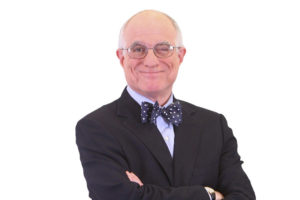Home// Articles// Starting a Company// Top 5 Takeaways from a Conversation with Stan Lapidus
Top 5 Takeaways from a Conversation with Stan Lapidus
 Tim Shieh
Platform Associate at Pillar VC
Tim Shieh
Platform Associate at Pillar VC
Earlier this month, we sat down with serial founder, Pillar VC Founding Pillar and Petri Co-Founder Stan Lapidus to hear about his journey to becoming one of the top bio inventors of our time.
Stan founded Cytyc in 1987, revolutionizing the modern pap smear. In 2007, the company was acquired by Hologic for $6.2 billion and in 2012, prototypes of Cytyc’s pap smear were featured in the Smithsonian Museum. Stan went on to found several other revolutionary bio and healthcare companies, including EXACT Sciences and Helicos BioSciences.
Here are 5 of the top nuggets of wisdom Stan shared:
1.
If you make an exciting discovery on the bench, it may be 10-20 years before it has an impact. Be intentional in the projects you choose to pursue further, as you could spend up to half your career working on it.
2.
When assessing an idea for potential, look for a large market, clear value proposition, and strong IP potential. This is the “secret sauce” that Stan has identified after many years of trial and error.
3.
Networking doesn’t happen overnight: it takes time to build the kind of networks that attract A-list investors. Be smart when asking for people’s time, and, if you’re going to meet someone, be very familiar with their work. Keep in mind that an initial A-list investor makes it easier to attract additional high-level investors.

4.
A crucial step for bio founders is gaining FDA approval and getting hospitals and regulators to adopt your technology. When designing a clinical trial, the key is to design for superiority as opposed to trying to meet the minimum requirements of sensitivity and specificity. Even when money is tight, taking the cheapest route to FDA approval may hurt you in the long run. For Cytyc, the second FDA submission garnered the company a label of superiority to the conventional pap smear because it allowed technologists to screen them faster.
5.
When transitioning from proof of concept to large retrospective case control studies, it is important to deeply understand the extent and depth of clinical trial design execution. The expertise needed for conducting and documenting a clinical trial is very different from being an inventor or a highly motivated bench scientist, but you can do your research and read scientific journals to understand the clinical physician’s perspective. Ask yourself these questions:
- What does a well-designed study look like?
- What is the investigator trying to prove?
- How many institutions did it take?
- How long did it take?
Whether you have founded several companies or are still trying to figure out where to start, we hope that you will be able to learn from Stan’s experience and apply it to your journey.




